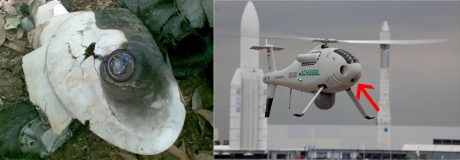There is people who believe that drones are quite recent players of modern warfare that were born to conduct what is widely known today as ISR (Intelligence Surveillance Reconnaissance).
This video will prove they are wrong.
It shows early BQM-34A and -34B Firebee test flights by the 6514th Test Squadron of the AF Flight Test Center during a defense suppression program called Have Lemon.
The -34A launched AGM-65 Maverick missiles and GBU-8 Stubby Hobo glide bomb but since it lacked asymmetric flight capability it had to drop a weighted shape from the opposite wing to balance weights. The drone was flown by a ground operator in a remote control van using a nose TV camera: since the weapons were electro-optically guided the operator could switch screen from the “drone view” to the “weapon view” to guide it to the target.
The BQM-34B included a laser designator nose and could fly without the weighted shape. In the video it is shown launching a Maverick and a Shrike missile.
Even if these early UCAVs were ready by the time the U.S. launched the Operation Linebaker I in 1972, they were never deployed because, being camouflaged and hidden, the priority targets assigned to the drones would have been difficult to see, identify and hit.
Anyway, although scarcely “advertised” the U.S. drones in Southeast Asia flew almost 3,500 UAV missions during the Vietnam war, at a cost of more than 550 drones lost.
Related articles
- First European experimental stealth combat drone rolled out: the nEUROn UCAV almost ready for flight (theaviationist.com)
- Syrian drones spying on rebels: made in Iran UAVs or amateur radio controlled models? (theaviationist.com)
- Another day, another Iranian drone. Tehran reveals the new “A1″ UAV. (theaviationist.com)



